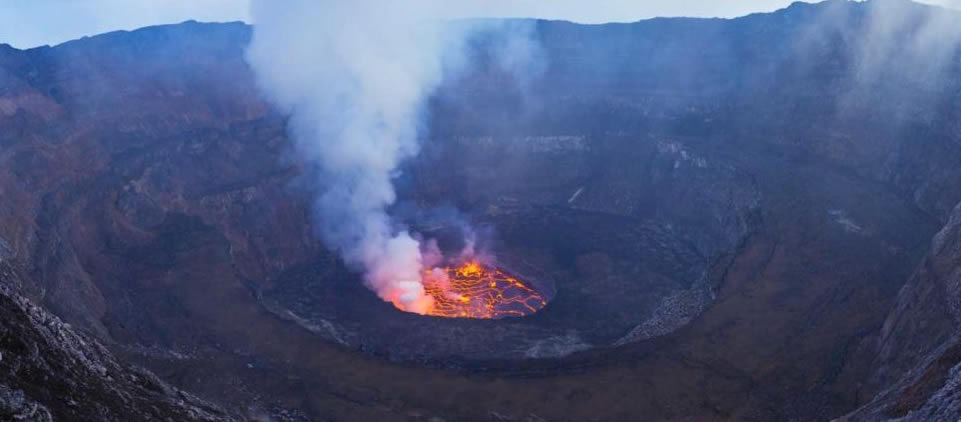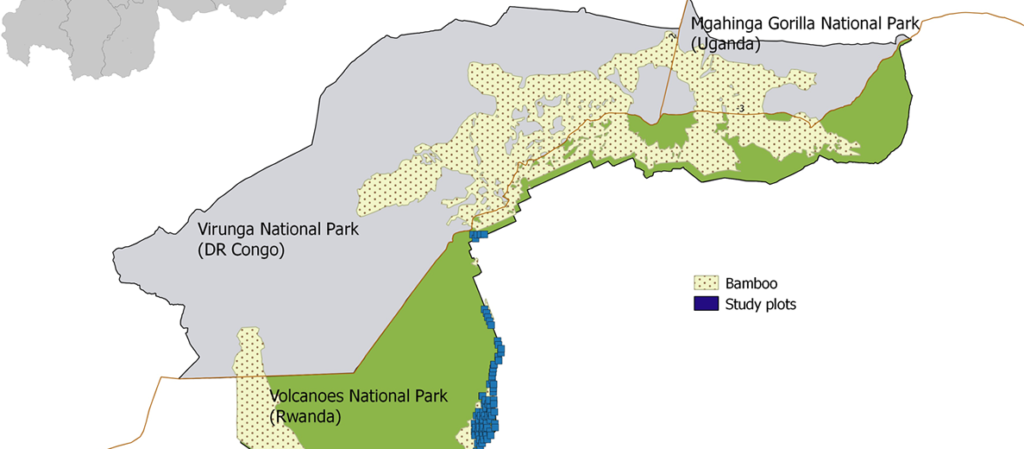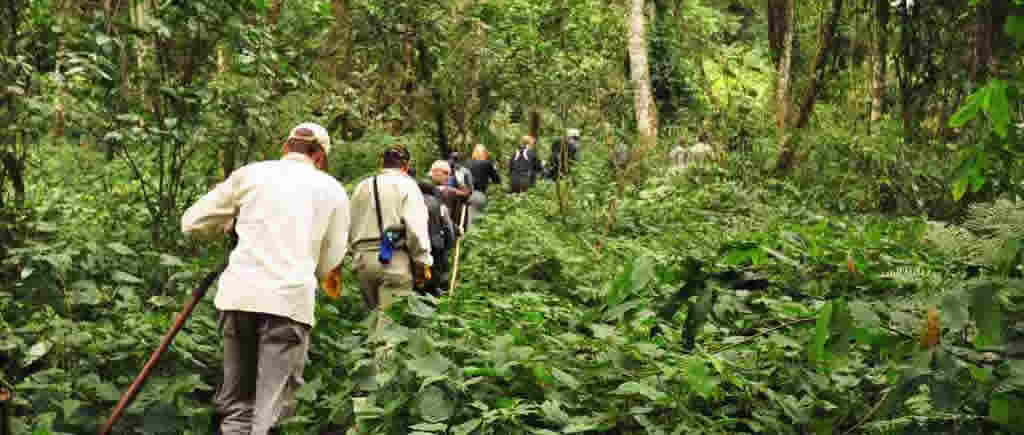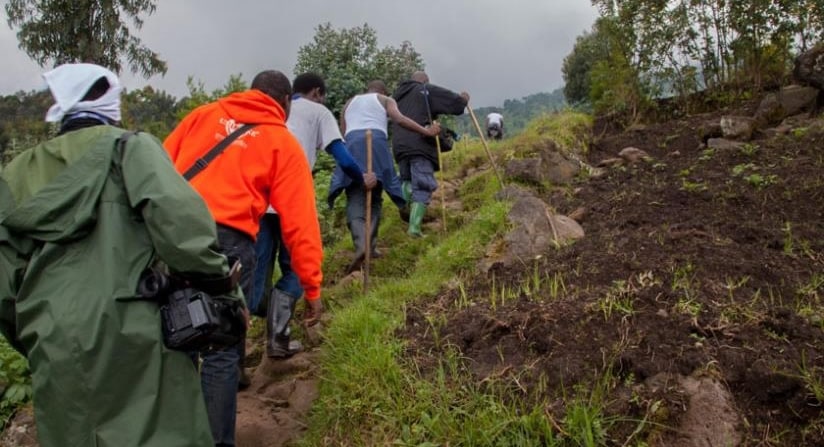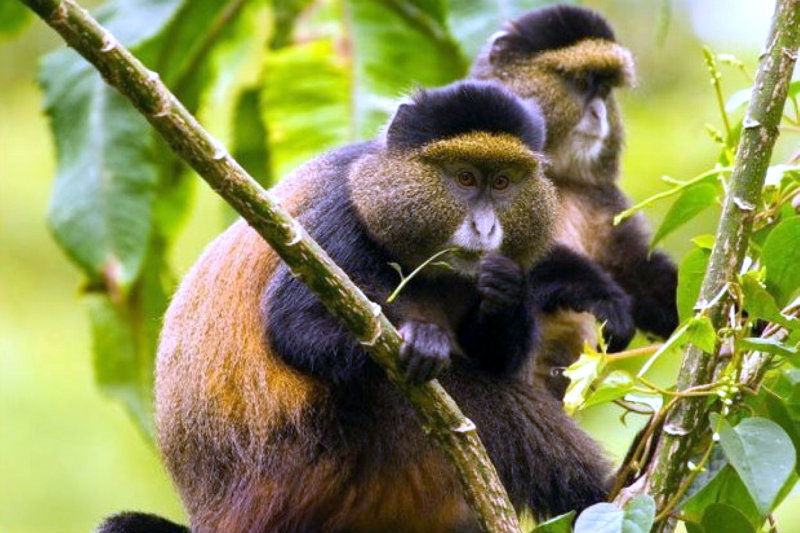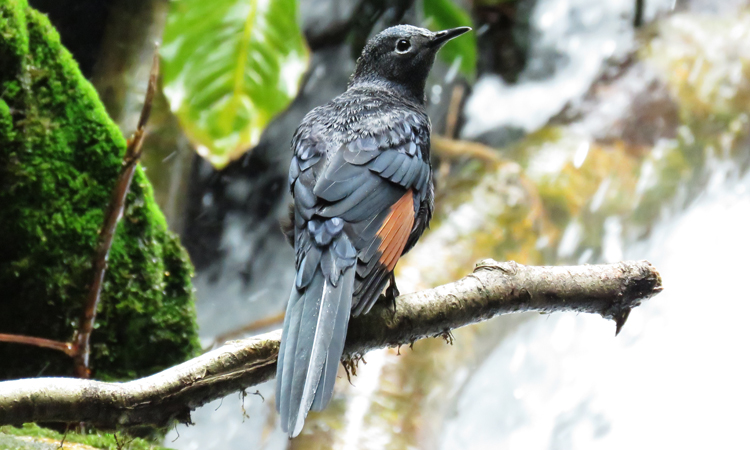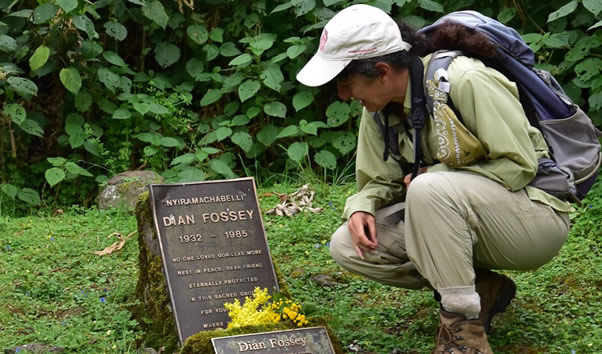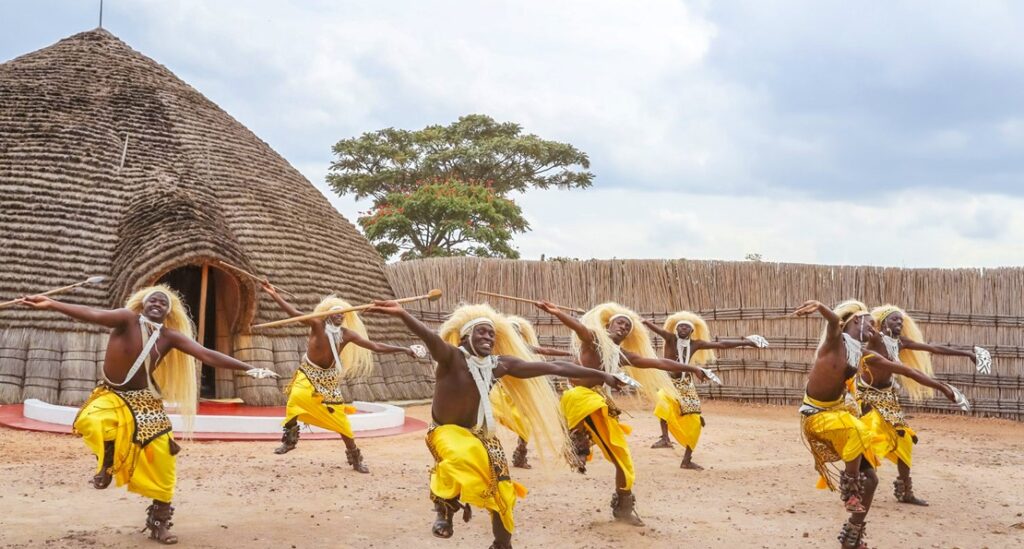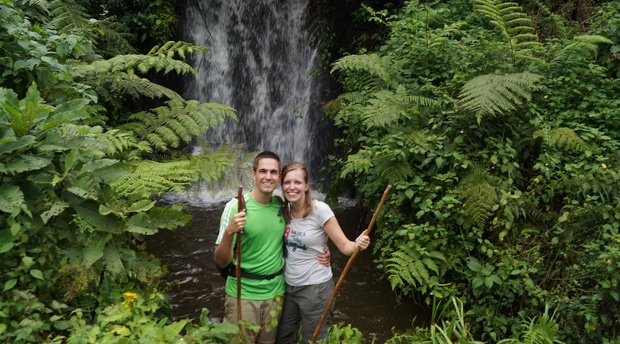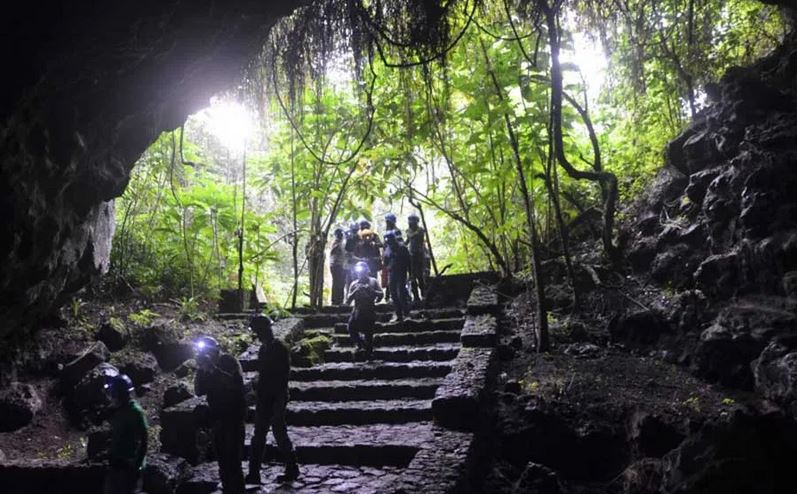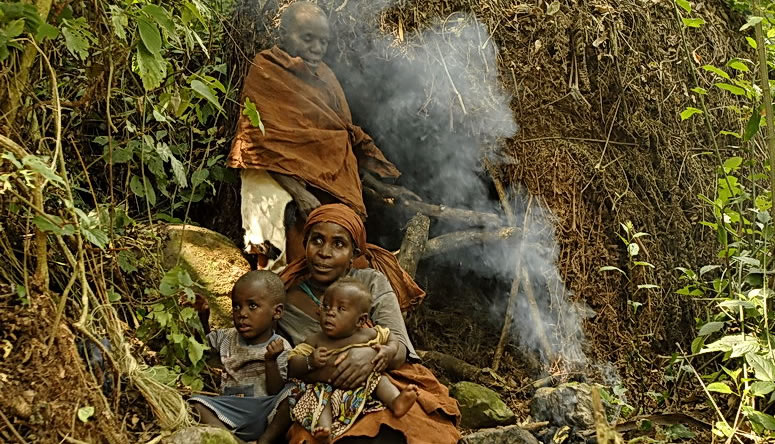Mt. Nyiragongo is one natural feature that defines Congo’s beauty. Nyiragongo volcano is one of the world’s active stratovolcanoes rising at an altitude of 3470m. It straddles the Virunga Mountain ranges/region, and its formation is connected to the Albertine rift. The active volcano lies inside Virunga National Park, D.R. Congo approximately 12 km from Goma and Lake Kivu. It is found next to Rwanda along the Western side. Besides Nyiragongo volcano, the Virunga Region is also comprised of Mount Mikeno, Mt. Karisimbi, Mt. Muhabura, Bisoke, Gahinga volcano, Sabyinyo, and Nyamuragira volcano.
At the summit of Nyiragongo volcano, there is a wider crater measuring up to 2kms, about 1 mile wide. The powerful Lava Lake lies right at the summits of Nyiragongo volcano and it features 2 remarkable cooled Lava benches. One of the Lava benches measures about 3175m and the other bench measures 2975m.
The Lava Lake is set at an altitude of 3250m and this is before the 1977 eruption with its depth measuring over 600m. Nyiragongo and Nyamuragira volcanoes account for 40% of historical volcanic eruptions in the African continent. Nyiragongo volcano’s cone features pyroclastic and lava flows. Its lavas are low silica, alkali-rich ad ultramafic extrusive rocks.
Mount Nyiragongo is an active volcano, and it has had multiple eruptions. The most recent eruption to have occurred at this volcano took place in 2021. Its effects were felt across Goma and other surrounding areas. It was formed due to volcanic activity and it remains one of the world’s active volcanoes.
Nyiragongo Volcano hiking guide
Nyiragongo volcano provides medium treks lasting between 5 and 6 hours. Hiking through this powerful volcano begins at Kibati ranger post and hikers/climbers are always led by experienced Virunga National Park ranger guides. This normally starts after briefing and at the summits, your breath can be taken away by the gazing Lava Lake. At a distance, you will clearly watch it as it glows and this is a great opportunity to take pictures
Descending from Nyiragongo
Descending journey to Kibati patrol post begins at you have had the last view of Nyiragongo volcano’s bubbling Lava Lake and magma. It takes a short time to get down to the base, about 4 hours. as you descend, you have a clear view of the surrounding volcanoes, the Rwenzori Mountain range, Virunga National Park, and Lake Kivu.
Nyiragongo hiking fees
In order to be in a position to trek through Nyiragongo volcano, you must have obtained a valid hiking permit. This is possible directly via Virunga National Park authorities or using a local tour operator. Each Nyiragongo hiking permit costs USD300 per person and for hikers who may come along with heavy luggage, you must plan for porter fees as well.
In addition, Congo visas are essential for all hiking safaris in Mount Nyiragongo. You can secure a valid single Congo tourist entry visa at USD105 per visitor. A single Congo tourist visa expires after 14 days from the day of entry. To fully explore and experience the Nyiragongo volcano trek, you require at least 3 days plus.
What to carry for the Nyiragongo trek in Congo
 Waterproof rain jacket/poncho- rains can’t be predicted at Mount Nyiragongo and a rain jacket should be a must-have.
Waterproof rain jacket/poncho- rains can’t be predicted at Mount Nyiragongo and a rain jacket should be a must-have.
Camera – when you finally get to the summits, the long evening will be for you to capture your best picture of the firry Mount Nyiragongo. This is why cameras shouldn’t be left behind when planning a successful Nyiragongo hiking tour.
Bottled water & snacks- you must keep fit throughout the 6 hours of trekking to the top of this volcano and this can be achieved when you have a pack of high-energy giving snacks and bottled water.
Waterproof hiking boots- find good hiking boots, waterproof with the best grip to enable you to navigate through the steep slopes and vegetation as you ascend and descend from the Nyiragongo volcano.
Warm clothing & sleeping bags- as you ascend higher to the summits of Nyiragongo, the weather keeps changing and it keeps becoming colder. This is why you need good warm clothes and a sleeping bag for an overnight stay. This means you shouldn’t leave a sweater, jacket, rain-resistant pants, warm socks, safari hat, and others.
A day/backpack is necessary to assist you to carry some of your essential gadgets such as cameras, phones, binoculars, etc. When finding a good backpack, consider a rainproof one.
Portal charge- at the summits expect you will have a long day and night of taking pictures and your camera or phone must be fully powered. You can only be guaranteed to recharge when you have a portable charger.
Torch- while at summit shelters, the facility is run by solar power, this often isn’t available everywhere and a torch is essential.
When to go hike Mt. Nyiragongo
 The best time to plan your hike to Mt. Nyiragongo is during the dry season, and which is from June to September or from December to February when there is no or little rainfall. The trails leading to the summits of Mount Nyiragongo remain dry and make it easier to navigate through the steep slopes as you conquer the 3470m elevation.
The best time to plan your hike to Mt. Nyiragongo is during the dry season, and which is from June to September or from December to February when there is no or little rainfall. The trails leading to the summits of Mount Nyiragongo remain dry and make it easier to navigate through the steep slopes as you conquer the 3470m elevation.
To enjoy your trek, you should be physically fit (you can exercise prior to visiting the Kibati patrol post for an actual hike to the top of Nyiragongo), mentally prepared, and ensure that you have a yellow fever vaccination certificate.
Where to stay
For all overnight stays at the top of Nyiragongo volcano, there are 12 summit cabins, each with two single beds. With your sleeping bags, you can have a comfortable stay at the summits and hikers get breakfast, dinner, bottled water, sleeping bags/mattress, etc.
Getting to Mt. Nyiragongo for a climbing adventure
From Goma in D.R. Congo, you can connect to Virunga National Park for your trek to the summits of Mount Nyiragongo. Or connect from Kigali through Gisenyi and from Gisenyi to the Congo border which is 20kms away. Settle at Kibati for a briefing about your hiking journey to the top of this volcano and this exercise is usually performed early before the actual hike starts.






